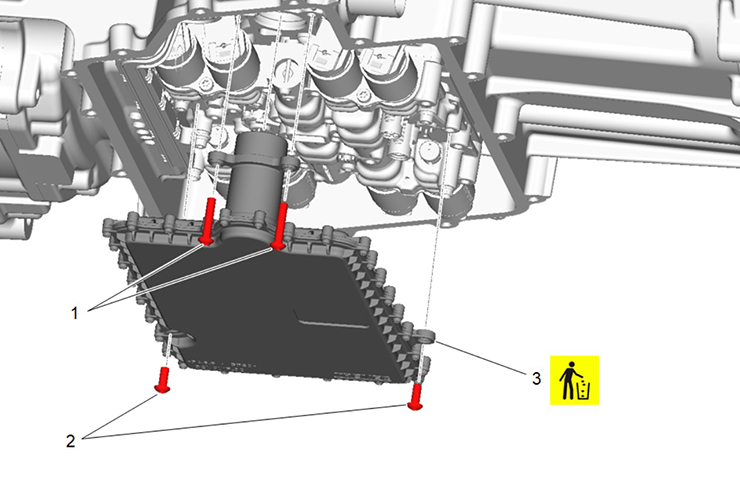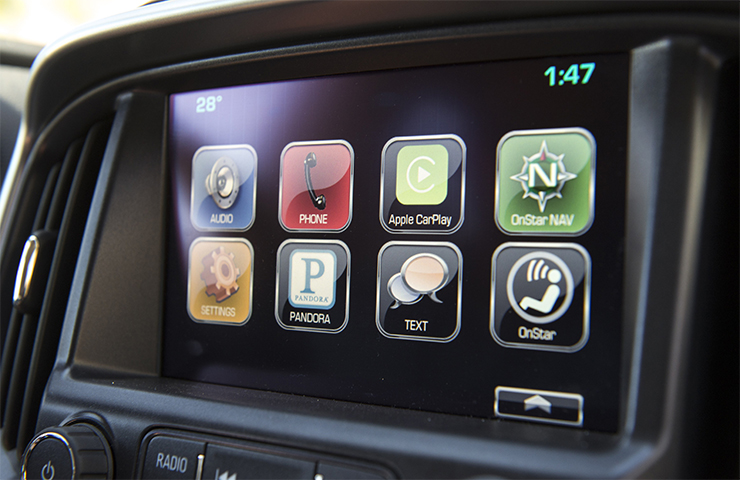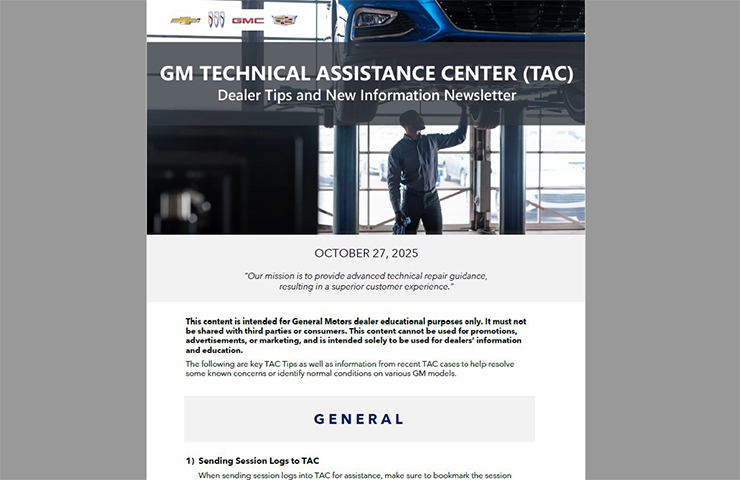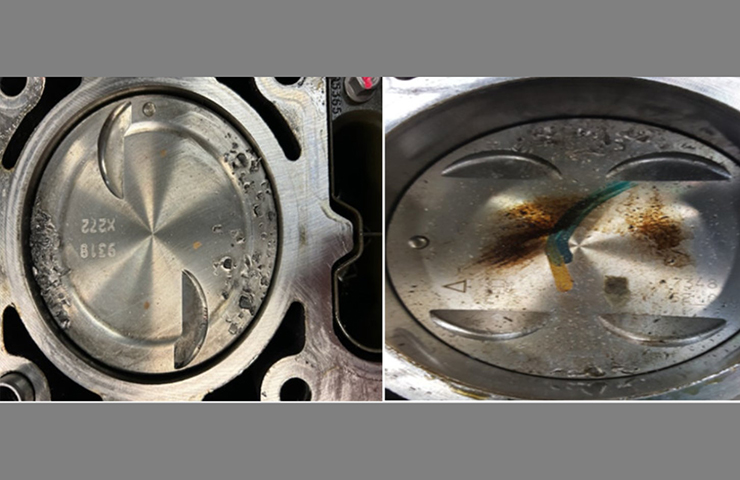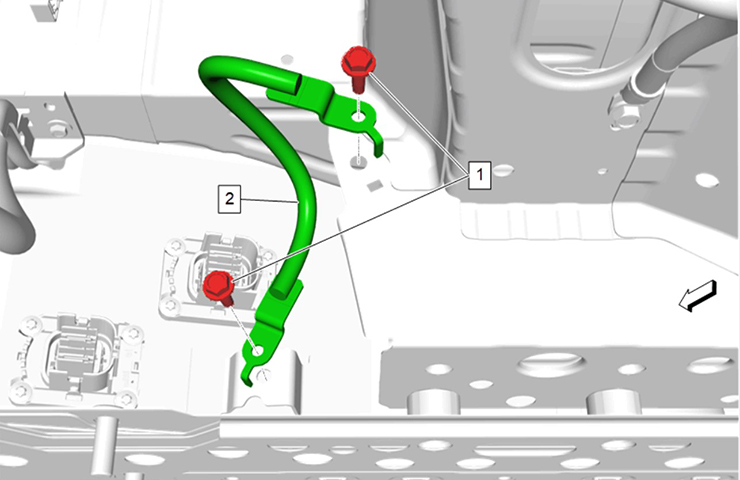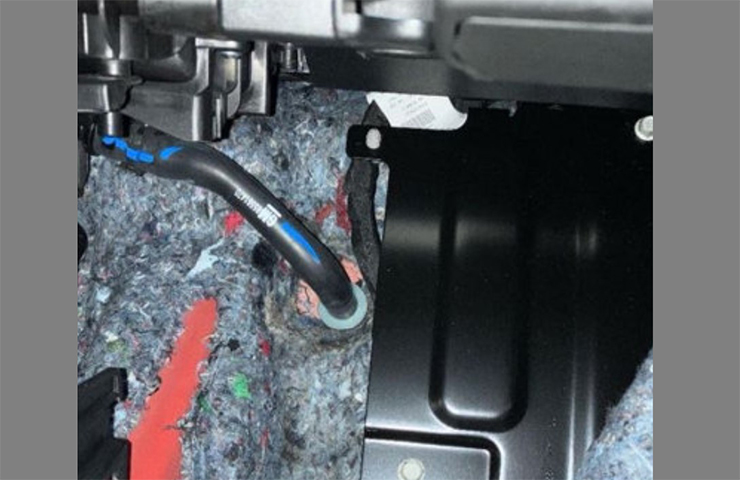When making vehicle repairs to or near the Supplemental Inflatable Restraint (SIR) system, technicians always need to consider the consequences. Even during repairs to components that are not directly connected to the SIR system, an inadvertent airbag deployment may be possible if the correct precautions are not taken. Airbag deployments are dangerous and costly.
For example, if a procedure involves removing the shift lever in the center console, first check for the location of the Sensing and Diagnostic Module (SDM) on the vehicle. It’s commonly located below the console on many vehicles. If the SIR system has not been disabled, there is a possibility of an airbag deployment if the SDM interprets any jostling or movement of near-by components as an accident or roll-over event.
Any service work to the SIR system, SIR wiring, or a component near or attached to an SIR component (Fig. 1) should be performed with the ignition off and the SIR system disabled. Repairs that require impact to the body or frame, such as adjusting a door striker using a mallet, also should be done with the ignition off.
 Fig. 1
Fig. 1
The point is to never get too comfortable working around any SIR components and to always follow the proper safety procedures.
SI Warnings
All Service Information warnings should be followed at all times, including the following warning for the SIR system:
When performing service on or near the SIR components or the SIR wiring, the SIR system must be disabled. Failure to observe the correct procedure could cause deployment of the SIR components. Serious injury can occur. Failure to observe the correct procedure could also result in unnecessary SIR system repairs.
Many vehicles contain a number of airbags (Fig. 2), depending on available and optional equipment, including the:
- Steering wheel
- Instrument panel
- Driver side (seat)
- Passenger side (seat)
- Driver side (B-pillar)
- Passenger side (B-pillar)
- Driver side (C-pillar)
- Passenger side (C-pillar)
- Driver knee
- Passenger knee
- Left roof rail
- Right roof rail
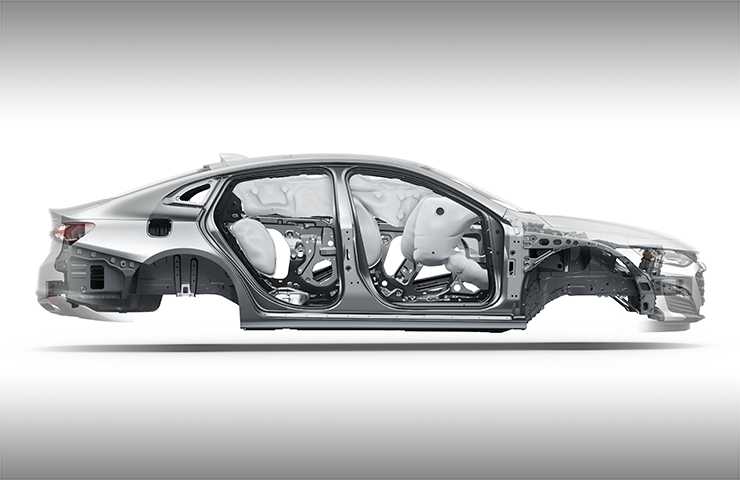 Fig. 2
Fig. 2
To view the locations of the airbags refer to the Master Electrical Component List in the appropriate Service Information.
In order to help avoid accidental airbag deployment, anytime a vehicle requires repair of the SIR system and another vehicle system, it’s recommended that repairs be made to the SIR system first, and then repairs made on the other system.
SIR Component Locations
Components of the SIR system are installed in various locations around a vehicle. Refer to the SIR Identification Views in the appropriate Service Information to find the location of the SIR components before performing service on or around SIR components or wiring. (Fig. 3)
 Fig. 3
Fig. 3
Disabling the SIR system
Here’s when and how the SIR system should be disabled.
| Condition | Action |
| If the vehicle was involved in an accident with an airbag deployment. When moving, removing or replacing an SIR component or a component attached to an SIR component. (Anytime you remove fasteners.) . If the vehicle is suspected of having shorted electrical wires. . |
Disconnect the negative battery cable(s) |
| When performing SIR diagnostics. | Follow the appropriate SIR service manual diagnostic procedure(s)
|
| When performing electrical diagnosis on components other than the SIR system. | Remove the SIR/Airbag fuse(s) when indicated by the diagnostic procedure to disable the SIR system
|
To disable the SIR system by disconnecting the negative battery cable:
- Turn the steering wheel so that the vehicles wheels are pointing straight ahead.
- Place the ignition in the Off position.
- Disconnect the negative battery cable from the battery.
- Wait 2 minutes before working on system.
Handling the SDM
There is a warning label on the SDM. The SDM fasteners should never be unbolted or removed until the battery is disconnected and the SDM electrical connector is removed, disabling the SIR system. (Fig. 4) The SDM is equipped with a rollover sensor. Turning the SDM over while connected under power may result in airbag deployment. If the unbolted module is picked up or tilted, and the system is powered, the SDM may see this as a rollover event and the system will respond accordingly. In addition, do not bump, wiggle, strike or jolt the SDM, or drop items on or near the SDM — all of which may be interpreted as a rollover or collision.
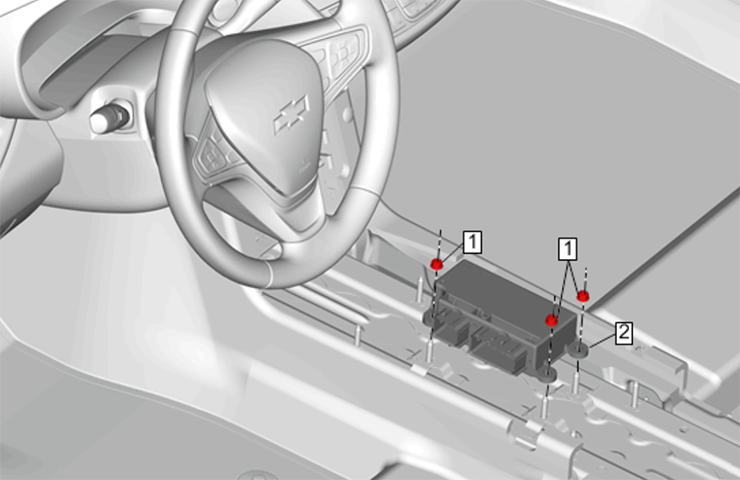 Fig. 4
Fig. 4
After repairs, the fasteners should be reinstalled and torqued to the proper specifications before reattaching the SDM electrical connector. The electrical connector must be reattached and the vehicle reassembled before reconnecting the negative battery cable to the battery.
The SDM also maintains a limited energy reserve that provides deployment power for the airbags if the module loses battery power during a collision. Deployment power is available for as much as 2 minutes after disconnecting the vehicle power. After disabling the system, wait 2 minutes to allow the limited energy reserve to dissipate before beginning any service work on the vehicle.
Learn More
For additional information, refer to:
- GM training course 22048.55V – Preventing Unintended Airbag Deployment (U.S.)
- Bulletin #16-NA-055: Information Regarding Servicing Components Located Near SIR Components.
– Thanks to Ernie Haller






